Understanding Tap to Pay: A Comprehensive Overview
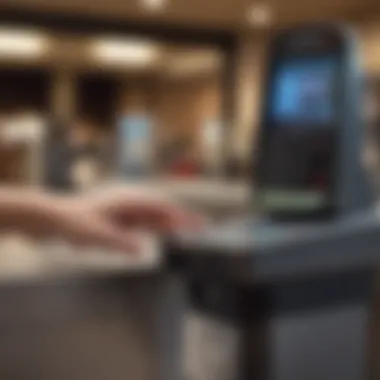
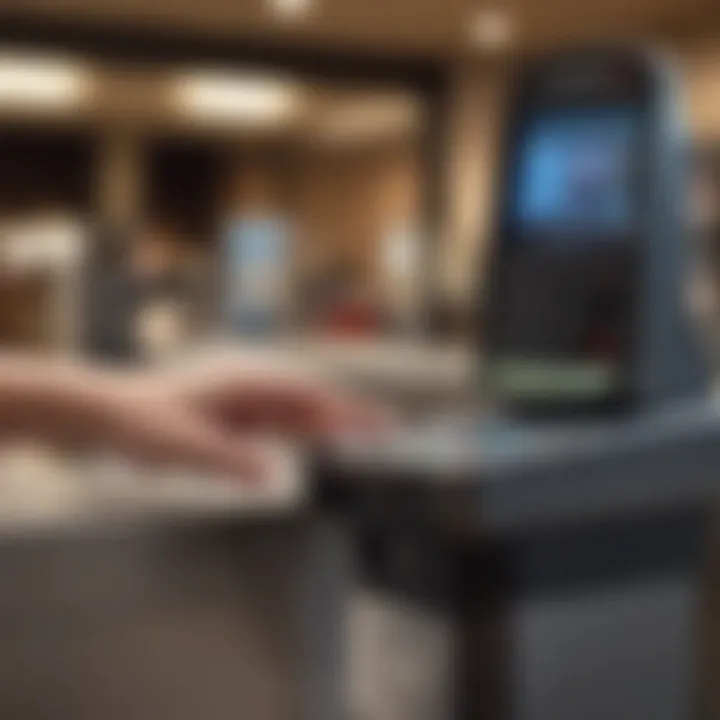
Intro
"Tap to pay" technology is becoming an essential part of daily transactions. This approach to payments allows users to complete transactions quickly and securely with various devices. Understanding the mechanisms involved in tap to pay is crucial for both consumers and businesses in today's fast-paced environment.
The emergence of contactless payments points toward a future where physical cash and traditional cards may become less relevant. This advancement provides convenience not only for consumers but also for merchants and financial institutions, creating a dynamic ecosystem that supports efficient monetary exchanges. To appreciate the full scope of this technology, one must delve into its definitions, implications, and security concerns.
Key Terms and Concepts
Definition of Key Terms
In the realms of payment technologies, several key terms emerge frequently:
- Contactless Payments: This is when payments are made using technology that enables the transfer of funds without physical contact. It includes mobile wallets and NFC (Near Field Communication) devices.
- NFC (Near Field Communication): A short-range wireless technology that allows smartphones, tablets, and other devices to communicate when placed close together.
- Mobile Wallet: An application that stores payment information securely on a smartphone, facilitating easy transactions.
Importance of Understanding Terminology
Understanding these terms lays the foundation for grasping how tap to pay operates. It is essential for users to recognize the capabilities and limitations of this technology. It also helps in decision-making, whether for personal use or business implementation. Knowing the specific terminologies can facilitate discussions about adopting such technologies in various settings. When consumers and businesses align in understanding these concepts, it promotes a smoother integration of tap to pay solutions.
Adoption Trends
The adoption of tap to pay is on the rise globally. Various factors contribute to this increasing trend:
- Increased Smartphone Usage: As smartphones become ubiquitous, users are drawn to mobile wallets for their convenience.
- Health Concerns: Especially highlighted during the COVID-19 pandemic, touchless payments offer a safer alternative to cash or card swipes.
- Merchant Adoption: Retailers are increasingly implementing tap to pay systems, enhancing customer experience and reducing transaction times.
Blockquote:
"The growth in tap to pay technology reflects a shift towards more efficient and hygienic payment methods—especially relevant in today’s world."
User Experience
User experience plays a significant role in the success of tap to pay technologies. Factors such as ease of use, transaction speed, and purchase tracking are vital. Consumers expect to conduct transactions seamlessly, without confusion or technical glitches. User-friendly designs in applications, alongside intuitively placed payment terminals, enhance overall satisfaction.
Merchants also benefit from implementing tap to pay solutions. By offering a fast and efficient checkout process, they can improve customer retention and encourage repeat business. Moreover, data collection from these transactions can offer insights into purchasing behaviors, enabling more targeted marketing strategies.
Prelims to Tap to Pay
Tap to Pay technology represents a significant evolution in the landscape of financial transactions. It allows users to make payments through a simple tap of their card or mobile device, facilitating a smoother, more efficient buying experience. Understanding its nuances is crucial, as it reflects broader trends in consumer behavior and technological advancement.
One noteworthy aspect of Tap to Pay is its convenience. In a world where speed and efficiency are paramount, consumers benefit from immediate transactions—eliminating long queues and reducing friction at points of sale. For merchants, this technology boosts transaction throughput.
Another vital point to explore is the world of security. As transactions become easier, concerns about safety also arise. Understanding how Tap to Pay operates aids in addressing these issues.
Considering these factors helps illuminate the relevance and potential impact of Tap to Pay. An informed discussion will equip readers to navigate this fast-evolving topic, providing insights on both its advantages and limitations.
Definition and Overview
The term "Tap to Pay" refers to contactless payment systems that utilize Near Field Communication (NFC) technology. Users can complete transactions by simply tapping their payment cards or compatible mobile devices near a payment terminal. This process requires no physical contact, making payments quicker and often more hygienic.
The architecture varies by system, but fundamental concepts remain consistent. The payment terminals are equipped with special sensors that detect nearby devices, allowing for seamless interaction. The process generally involves the transfer of encrypted payment data, ensuring security while minimizing effort for the user.
Tap to Pay systems have grown in popularity, particularly in urban areas. Their appeal stems largely from user convenience and efficiency, vital for managing busy lifestyles.
Historical Context
The evolution of Tap to Pay technology can be traced back to developments in related fields. The introduction of RFID technology in the 1980s laid foundational work for contactless payments. However, practical use in payment systems started gaining traction only in the early 2000s with the rise of NFC. This breakthrough allowed devices to communicate over short distances securely.
By 2010, major companies like Visa and MasterCard began rolling out contactless payment options. Adoption was gradual, yet rising smartphone penetration and increasing public trust in digital transactions continued to drive acceptance.
The global pandemic in 2020 accelerated demand for contactless solutions, as consumers sought safer alternatives to traditional payment methods. This shift marked an irreversible trend toward Tap to Pay technologies, which are now prevalent worldwide.
The Technology Behind Tap to Pay

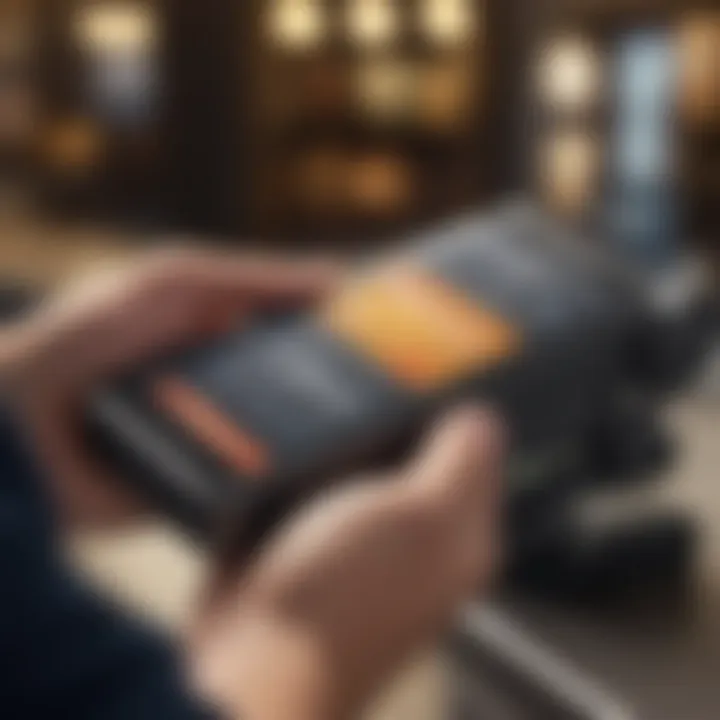
The technology that enables tap to pay transactions is crucial in understanding how this payment method functions effectively. This section will delve into three specific components of this technology: NFC technology, the secure element, and tokenization. Each of these elements plays a vital role in ensuring that transactions are conducted securely and efficiently. The seamlessness of tap to pay relies heavily on these technologies, which also contribute to the overall appeal for both consumers and merchants.
NFC Technology
NFC, or Near Field Communication, is a wireless communication technology that allows data exchange between devices that are close to each other, typically within a few centimeters. Its role in tap to pay is central. When a consumer holds their NFC-enabled device, such as a smartphone or smart card, near a payment terminal, it establishes a connection almost instantaneously.
- Quick and Efficient: The speed at which NFC operates enhances user experiences. Transactions completed via NFC typically take seconds, making it a faster alternative compared to traditional cash or magnetic stripe card payments.
- User-Friendly: This technology requires little technical understanding from users. Most people can tap their devices effortlessly against a reader without requiring any additional steps.
- Widely Adopted: Many devices today, including smartphones and payment cards, come with NFC technology integrated.
The simplicity inherent in NFC technology supports the growing acceptance of tap to pay methods, as it effectively addresses consumer demands for both convenience and speed.
Secure Element
Another critical component of tap to pay is the secure element. It acts like a fortified vault within the device, storing sensitive data securely. This protected component plays several key roles:
- Storing Payment Information: It safeguards the user's credit card or bank account details. The secure element is designed to resist tampering, ensuring that even if a device is lost or stolen, the sensitive information remains protected.
- Facilitating Transactions: When a transaction is initiated, the secure element provides the necessary credentials and encrypts the data to be sent to the payment terminal. This level of security is essential to protect against fraud.
It is significant to note that without a secure element, the risks associated with electronic payments would considerably increase, discouraging users from adopting tap to pay.
Tokenization
Tokenization adds another layer of security to tap to pay systems. Instead of transmitting actual card information during a transaction, tokenization replaces sensitive data with a unique identifier, or token. This process ensures that the real payment information is never exposed. Here are key aspects of tokenization:
- Reducing Fraud Risk: Because transactions use a token rather than real account details, the exposure of sensitive data is limited. If a hacker intercepts the token, they cannot derive any meaningful information about the user's payment account.
- Transaction Specificity: Tokens are often tied to a single transaction or a limited time period. This specificity means even if a token were compromised, it could not be reused for future transactions.
- Increasing Trust Among Users: The knowledge that tokenization is in place can encourage consumers to embrace tap to pay, knowing their financial information is secure.
In summary, the technology behind tap to pay encompasses several advanced systems designed to provide quick, convenient, and secure transactions. Understanding NFC technology, the secure element, and tokenization is crucial for grasping how tap to pay works effectively. The ease of use and robust security features present a compelling case for consumers and merchants alike, making the transition from traditional payment methods more appealing.
How Tap to Pay Works
The functionality of tap to pay is fundamentally reshaping the landscape of financial transactions. This section will delve into the mechanics of this payment method, which is crucial for understanding its wider implications for both consumers and merchants. Tap to pay systems are becoming increasingly prevalent, offering distinct advantages including speed, convenience, and efficiency. This method eliminates the need for physical contact with payment terminals, enhancing the user experience.
Initiating a Transaction
In a typical tap to pay process, initiation begins when a consumer brings their contactless payment card or mobile device close to a compatible terminal. This terminal utilizes Near Field Communication (NFC) technology to establish a connection.
Users must first ensure their device or card has been appropriately set up for mobile payments. For instance, a user with a smartphone may have enabled mobile wallet apps, such as Apple Pay or Google Pay. This preparation is vital as it allows the device to communicate with the reader effectively.
Once the device is near the terminal, it sends pre-encoded payment information. The terminal recognizes the signal and prompts the transaction process. It is essential to note that transactions through this method do not require a signature or PIN for amounts within certain limits, making it quick and efficient. The ease of starting the transaction can enhance customer satisfaction, particularly in high-traffic retail environments.
Transaction Processing
After initiation, the transaction processing phase begins. The point-of-sale terminal uses the Alphanumeric Driving Technology to facilitate a secure communication link with the payment processing network. This ensures that the transaction is both swift and reliable.
During processing, the terminal transmits the transaction details to the payment processor. This includes essential data like the amount and the unique payment token generated during the initiation phase. The tokenized data minimizes the risk of sensitive information being intercepted. Upon successful request, the payment processor communicates back to the terminal, indicating whether the transaction has been approved or declined.
Key points of transaction processing include:
- Speed: The whole procedure typically takes just a few seconds.
- Security: Tokenization and other encryption methods keep sensitive data safe from fraud.
- Confirmation: Once processed, users receive confirmation immediately. This instant feedback fosters a sense of security and trust.
"Tap to pay technology signifies a paradigm shift in payment methods, merging convenience with robust security measures."
In summary, understanding how tap to pay works is pivotal for grasping the broader implications of this technology in the banking and retail sectors. It exemplifies how consumer expectations are shaping transaction frameworks that prioritize speed and simplicity.
Benefits of Tap to Pay
The benefits of Tap to Pay embody a paradigm shift in how both consumers and merchants engage in financial transactions. This section will dissect the implications of this technology on daily financial interactions. It will highlight factors such as convenience, efficiency, and speed. Each element draws attention to why Tap to Pay technology is increasingly favored in modern commerce.
Convenience for Consumers
One of the standout advantages of Tap to Pay is its convenience. Consumers experience a seamless payment process. Instead of fumbling with cash or entering lengthy PINs, a simple tap or wave of a card or compatible device suffices. This reduces friction during transactions. It makes shopping an effortless experience, especially for those on the go.
For many users, this ease of payment leads to higher satisfaction levels. Additionally, the integration of mobile wallets and cards streamlines multiple payment methods. Consumers can consolidate several payment options on a single device. The ability to make quick payments promotes usage in daily life. Moreover, contactless payments allow customers to continue transactions, even during health concerns where physical touching of surfaces is minimized.
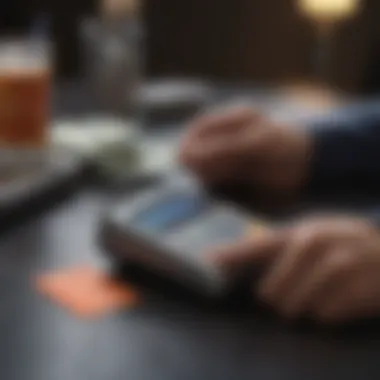
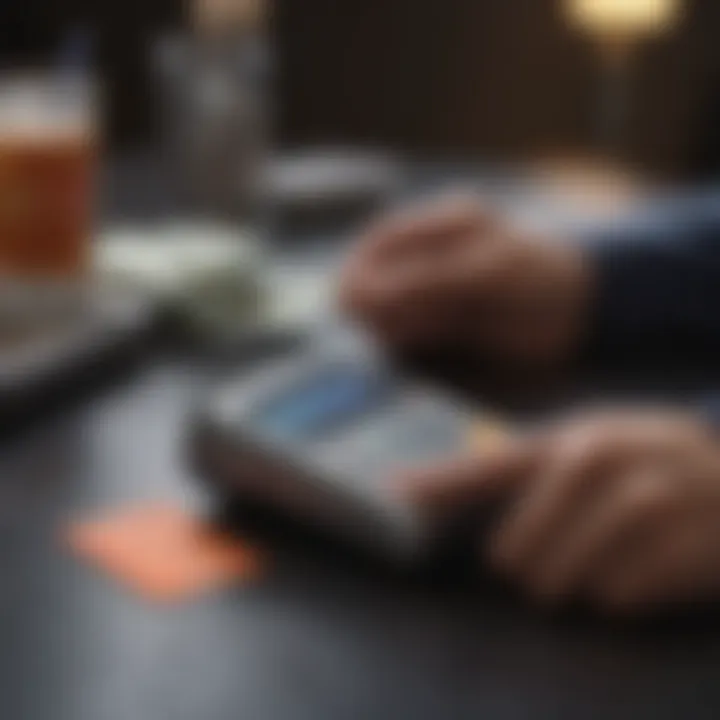
Efficiency for Merchants
Merchants benefit from the Tap to Pay technology significantly as well. By facilitating quicker transactions, businesses can serve more customers in a reduced time frame. This efficiency translates into enhanced customer turnover, particularly in sectors such as retail and food services. Long lines deter potential sales. Tap to Pay minimizes wait times and increases overall customer satisfaction.
Additionally, Tap to Pay reduces the need for cash handling. This aspect cuts down on cash-related theft and errors associated with manual cash management. Merchants also experience reduced transaction costs over time, as electronic payments often result in lower fees compared to cash management processes.
Enhanced Speed of Transactions
Speed is a critical factor in the efficacy of any payment system. Tap to Pay enables almost instantaneous transactions. Research indicates that transactions using this approach can be completed in seconds. Instead of traditional methods where entering PINs or signatures could take longer, contactless payments require no such delays.
This speed not only enhances the consumer experience but also general operational flow for businesses. Faster payment processing allows for real-time inventory management and improved cash flow. In a competitive market, speed can be a differentiator. More businesses are recognized for their efficiency when they adopt technologies that cut down transaction times.
"The beauty of Tap to Pay lies in transforming mundane transactions into swift experiences, satisfying consumer demand for speed and efficiency."
Concerns and Considerations
The implementation of tap to pay technology has not come without its share of concerns. Understanding these issues is crucial for both consumers and merchants. Security and privacy are among the top considerations. While tap to pay offers convenience and speed, it raises questions about whether these benefits come at the cost of user safety and confidentiality.
Security Risks
The main security concern surrounding tap to pay is the potential for fraud. Since these transactions can occur quickly and without physical contact, unauthorized users may attempt to exploit this feature. With the rise of contactless cards, there is an increased risk of card skimming. Skimmers are devices that illegally capture the card information from unsuspecting consumers. These devices can be discreetly placed near payment terminals, allowing thieves to steal information without any physical interaction.
"Security is not just about protection; it's about ensuring trust in transactions."
Additionally, there is the risk of data breaches. When a financial transaction is processed, personal information is transmitted over networks. If these networks are not properly secured, they become vulnerable to hacks. Therefore, merchants must implement strong cybersecurity measures to safeguard their customers' information.
Another aspect to consider is the dependence on technology. If a device malfunctions or fails to accurately process a transaction, it can create confusion, leading to potential loss or frustration for consumers.
Privacy Issues
Privacy is a significant concern within the tap to pay framework. Each time a transaction is processed, data is generated. This includes not only the payment amount but also the location and timing of the purchase. Such data can be used to build detailed consumer profiles which may intrude upon personal privacy.
The collection of data raises ethical questions regarding consent. Some consumers may not be entirely aware of how their information is being used or stored by merchants. The challenge lies in ensuring that transparency is maintained. It is essential for businesses to communicate how they will use customer data and what measures are in place to protect it.
Furthermore, the regulatory environment varies by region. Different countries have varying laws regarding data protection. Companies operating in multiple jurisdictions must navigate these complex legal landscapes to remain compliant. This can add layers of complexity for businesses that accept tap to pay.
Comparative Analysis with Traditional Payment Methods
The rise of 'tap to pay' technology has important implications when we compare it to traditional payment methods. Understanding these differences can help consumers and merchants appreciate the benefits and drawbacks associated with each option. This analysis focuses on two primary comparisons: Tap to Pay against cash transactions and Tap to Pay in contrast to chip and PIN systems. Each of these comparisons reveals distinct aspects of modern payment technologies and their adaptability in today's fast-paced environment.
Tap to Pay vs. Cash Transactions
When we weigh tap to pay against cash transactions, we find several distinct advantages of the former. Tap to pay systems, which rely on Near Field Communication (NFC) technology, enable quicker and more efficient transactions. Here are some key points to consider:
- Speed: Tap to pay transactions are generally faster than cash exchanges. The process involves merely tapping a smartphone or card on a terminal, leading to quicker checkouts. In contrast, cash requires counting, making it time-consuming.
- Convenience: With tap to pay, the need to carry cash is diminished. Many people prefer to carry cards or smartphones, making the need for physical cash less relevant.
- Hygienic Considerations: Especially during health crises, many consumers prefer digital payments over cash, reducing physical contact and transmission risk.
- Transaction Records: Digital transactions automatically produce receipts, which aids in budget tracking, as contrasted with cash, where tracking spending becomes more difficult without proper receipt management.
However, cash transactions still hold certain advantages:
- Universal Acceptance: Cash is accepted almost everywhere, whereas tap to pay may not be available in certain small businesses or remote locations.
- No Dependency on Technology: Cash does not rely on electronic devices or internet connectivity, making it a fail-safe in various scenarios.
Tap to Pay vs. Chip and PIN
Comparing tap to pay with chip and PIN introduces additional complexities. While both are secure methods to process payments, they have different mechanisms and user experiences:
- User Experience: Tap to pay offers a frictionless experience as users can complete transactions swiftly by tapping. In contrast, chip and PIN requires users to insert the card and enter a PIN, prolonging the process.
- Security Features: Chip and PIN technology provides a level of protection through requiring two-factor authentication. However, tap to pay also employs encryption and tokenization, ensuring transactions remain secure.
- Consumer Preferences: Many users are gravitating towards contactless payments for their ease of use. A notable trend reflects a growing preference for tap to pay services over inserting cards, especially among younger consumers.
"As consumer habits evolve, understanding the differences between tap to pay and traditional payment systems becomes increasingly important for adapting to market demands."
In summary, examining tap to pay in relation to cash and chip & PIN reveals clear advantages that suggest a shift towards contactless solutions. Analyzing these payment methods not only highlights user preferences but also emphasizes a stronger, more secure future in financial transactions. This knowledge empowers consumers and businesses to make informed choices in their payment methods.
User Experience and Adoption Trends


Understanding user experience is crucial in evaluating the effectiveness of tap to pay systems. As these payment methods become more popular, how consumers interact with them plays a central role in driving their widespread adoption. User experience in this context encompasses multiple factors, including transaction speed, ease of use, and overall satisfaction.
A positive experience can lead to higher consumer adoption rates and increased reliance on tap to pay technology. For instance, when users find the process straightforward and quick, they are more likely to use it again. Conversely, any friction during the transaction may scare off potential users. Thus, companies need to invest in refining the user interface and ensuring simplicity in the payment process.
Moreover, the demographic makeup of users also influences adoption. Younger generations, familiar with technology, often embrace tap to pay systems more readily than older individuals who may prefer traditional payment methods. Over time, as technology becomes ubiquitous, it may inspire a shift in this trend.
Consumer Adoption Rates
Consumer adoption rates provide significant insights into the success and popularity of tap to pay methods. Various reports highlight how usage has surged in recent years. For example, Visa's data indicates a noticeable increase in contactless payments, especially during the pandemic when hygienic transactions became a priority.
Several factors affect these rates:
- Convenience: Users appreciate the speed and simplicity, leading to increased acceptance.
- Familiarity: As more individuals encounter these payment options, familiarity breeds comfort.
- Promotions: Merchants often incentivize the use of tap to pay through discounts or limited-time offers, attracting more users.
Additionally, studies show that younger consumers lead in adoption, valuing efficiency over traditional payment methods. However, to foster more usage among older demographics, educational initiatives may play a key role.
Merchant Acceptance
Merchant acceptance is another essential factor influencing user experience and overall adoption of tap to pay technology. If businesses do not support tap to pay systems, even the most enthusiastic consumers might find themselves limited in using these modes of payment.
Increasingly, businesses are recognizing the benefits of integrating tap to pay options. Benefits for merchants include:
- Speed of Transactions: Elimination of hold-ups associated with cash handling.
- Improved Customer Satisfaction: Consumers tend to appreciate a seamless checkout experience.
- Broader Customer Reach: Accepting diverse payment methods can attract more customers, particularly tech-savvy ones who prefer modern solutions.
Merchants, therefore, find themselves in a double-edged position: embracing tap to pay enhances customer experience but also requires initial investment in technology.
In summary, the understanding of user experience and the trends in adoption reveal valuable insights into the broader implications of tap to pay technology in our evolving financial landscape. As both consumers and merchants adapt, the success of these payment modalities will hinge on their collective experiences.
Future Outlook of Tap to Pay
The evolution of tap to pay is a reflection of increasing reliance on digital solutions in financial transactions. As technology progresses, the prospects of tap to pay will likely expand. Here, we explore two crucial components shaping its future: emerging technologies and global trends.
Emerging Technologies
Tap to pay systems are poised to benefit from several advancements in technology. For instance:
- Biometric Authentication: Incorporating fingerprint or facial recognition could bolster security measures, making transactions both safer and more convenient.
- Enhanced NFC Capabilities: The capabilities of Near Field Communication are expanding, allowing for even faster and more efficient transactions. This could enhance user experience significantly.
- Blockchain: Integrating blockchain for transaction validation could provide an additional security layer, ensuring transparency and reducing fraud risk.
Emerging technologies will also improve existing infrastructures. This could lower transaction fees and enhance reliability, driving greater acceptance among consumers and merchants alike.
Global Trends
The global landscape for payment solutions is shifting rapidly. A few key trends emerging include:
- Increased Mobile Wallet Usage: More consumers are adopting mobile wallets like Apple Pay, Google Pay, and Samsung Pay, further normalizing tap to pay behaviors.
- Regulatory Changes: Governments and financial bodies around the world are adapting to new technology. As legislation evolves, it will ensure the secure implementation of tap to pay systems.
- Expanding Merchant Adoption: Businesses, large and small, are investing in tap to pay technology. This adoption reflects a broader acceptance and demand for seamless payment solutions.
These factors suggest that the future of tap to pay is bright, as technology and societal shifts align to favor convenient, fast transactions.
In summary, understanding the future outlook of tap to pay is essential. Emerging technologies enhance security and efficiency, while global trends indicate greater acceptance and usage. The interplay of these elements will likely define the next phase of this payment revolution.
The End
The conclusion serves as a crucial element in understanding the overall implications of tap to pay technology. In this article, we have analyzed how tap to pay has transformed the landscape of financial transactions through its innovative approach and convenience. One of the most significant benefits of tap to pay is its ability to streamline purchases, allowing consumers to transact swiftly with minimal friction. As users become increasingly familiar with this method, the adoption rates are likely to rise further.
Moreover, the article has highlighted some key considerations regarding security and privacy. While tap to pay offers ease and efficiency, it is imperative to balance these benefits against potential risks. This awareness can empower both users and merchants to implement better practices and understand their responsibilities in protecting financial information.
Overall, the effects of tap to pay are profound and multifaceted. As we recap the insights discussed in this comprehensive overview, it becomes clear that tap to pay is not just a mode of transaction but a pivotal element shaping the future of commerce.
Recap of Key Insights
- Ease of Use: Tap to pay simplifies the payment process, enhancing consumer experience.
- Efficiency: Merchants benefit from faster transactions, which can improve customer satisfaction.
- Security Considerations: Awareness around security risks is vital. Technologies like tokenization and encryption contribute to safety.
- Adoption Trends: Rising consumer and merchant acceptance indicates a shift towards cashless transactions.
"The evolution of payment systems significantly impacts consumer behavior and business operations."
Final Thoughts
Looking ahead, tap to pay technology is poised to continue its upward trajectory. With ongoing advancements in mobile payment technology, consumer behaviors will likely adapt along with innovations. Understanding the current landscape assists stakeholders in navigating the complexities and benefits of these systems. As mobile wallets and the Internet of Things expand, integrating tap to pay could redefine not only how transactions occur but also how we experience commerce in everyday life. In this context, staying informed about emerging trends and maintaining a proactive approach to security is essential for both consumers and merchants alike.







